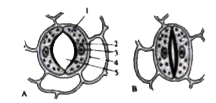Pollution can brings about change in
Biogeochemical cycling
Abiotic environment
Biotic environment
None of the above
The correct Answer is:C
Step-by-Step Solution:
1. Understanding Pollution:
- Pollution refers to the introduction of harmful substances or pollutants into the environment, which can have detrimental effects on living organisms and ecosystems.
2. Types of Pollution:
- There are various types of pollution including air, water, soil, and noise pollution. Each type affects the environment and living beings in different ways.
3. Impact on Biotic Environment:
- Pollution significantly impacts the biotic environment, which includes all living organisms such as plants, animals, and humans. For example, air pollution can lead to respiratory diseases in humans and animals, while water pollution can harm aquatic life.
4. Impact on Abiotic Environment:
- The abiotic environment includes non-living components like air, water, and soil. Pollution can alter these components, but the question specifically asks about changes in living organisms.
5. Biogeochemical Cycling:
- Biogeochemical cycles (like the carbon cycle, nitrogen cycle, etc.) involve the movement of elements and compounds through living organisms and the environment. While pollution can affect these cycles, the question focuses on direct changes in living organisms.
6. Conclusion:
- Based on the analysis, the most appropriate answer to the question "Pollution can bring about change in" is the biotic environment. Therefore, the correct option is C. Biotic environment.
---
- Pollution refers to the introduction of harmful substances or pollutants into the environment, which can have detrimental effects on living organisms and ecosystems.
- There are various types of pollution including air, water, soil, and noise pollution. Each type affects the environment and living beings in different ways.
- Pollution significantly impacts the biotic environment, which includes all living organisms such as plants, animals, and humans. For example, air pollution can lead to respiratory diseases in humans and animals, while water pollution can harm aquatic life.
- The abiotic environment includes non-living components like air, water, and soil. Pollution can alter these components, but the question specifically asks about changes in living organisms.
- Biogeochemical cycles (like the carbon cycle, nitrogen cycle, etc.) involve the movement of elements and compounds through living organisms and the environment. While pollution can affect these cycles, the question focuses on direct changes in living organisms.
- Based on the analysis, the most appropriate answer to the question "Pollution can bring about change in" is the biotic environment. Therefore, the correct option is C. Biotic environment.
Topper's Solved these Questions
- BOOK - DINESH PUBLICATION ENGLISHCHAPTER - ENVIRONMENTAL ISSUESEXERCISE - Check your grasp18videos
ENVIRONMENTAL ISSUES
- BOOK - DINESH PUBLICATION ENGLISHCHAPTER - ENVIRONMENTAL ISSUESEXERCISE - Brain teasers-X145videos
ENVIRONMENTAL ISSUES
- BOOK - DINESH PUBLICATION ENGLISHCHAPTER - ECHINODERMATAEXERCISE - REVISION QUESTIONS65videos
ECHINODERMATA
- BOOK - DINESH PUBLICATION ENGLISHCHAPTER - EVIDENCES OF EVOLUTIONEXERCISE - CHECK YOUR GRASP19videos
EVIDENCES OF EVOLUTION
Similar Questions
Knowledge Check
- Question 1 - Select One
Assertion: Hydrolysis of sucrose brings about a change in sign of rotation from dextro to laevo.
Reason: Hydrolysis always changes the optical rotation of a compound.AIf both assertion and reason are true and reason is the correct explanation of assertion.BIf both assertion and reason are true but reason is not the correct explanation of assertion.CIf assertion is true but reason is false.DIf both assertion and reason are false.
An enzyme which brings about change in side group without altering composition is
View SolutionSubstance which bring about changes in allosteric sites are called.
View SolutionAn enzyme brings about
View SolutionGiven below are the diagrams of a certain structure in plants in two conditions :

Describe the mechanism which brings about the change in the structures depicted in A and B.View SolutionColchicine brings about :
View SolutionPollution is any undesirable change in
View SolutionWith reference to the functioning of the eye, answer the questions that follow :
Name the two structures in the eye responsible for bringing about the change in the shape of the lens.View Solution

